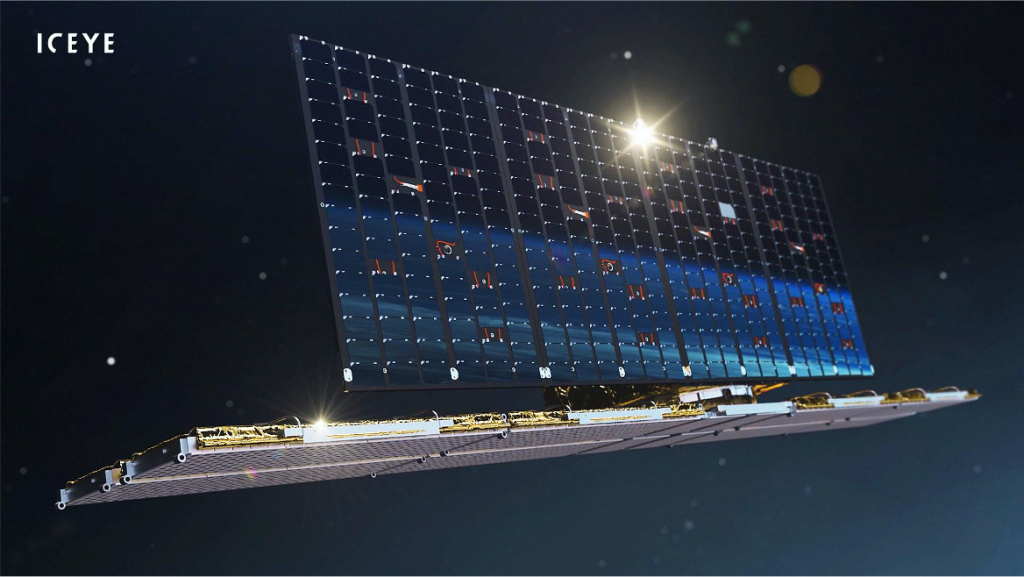Space Technology Company ICEYE praises LUMI user support: “A CSC expert guided us step by step.”
For ICEYE, ensuring the necessary support for deployment posed a fundamental challenge.
Top performance and a very competitive price would not have sufficed if Tapio Friberg would have had to fight with the deployment process for weeks.
Ease of use and user support. These are the two points for which Tapio Friberg, ICEYE Machine Learning Engineer, gives special thanks.
“And the very best experts supported us in the deployment process,” Friberg says.
The Finnish space technology company ICEYE manufactures satellites and uses them to deliver real-time radar images from anywhere, at any time of the day and under any conditions.
ICEYE makes the radar signal computationally visible and produces analytics of what the image shows. The company has imaged and investigated, among other things, floods and wildfires.
In his work, Tapio Friberg uses the LUMI supercomputer’s GPUs, i.e. LUMI-G, for product development of automated image interpretation. Training machine learning algorithms takes several weeks, so it is important to keep the data readily accessible.
“Data storage has been a particularly useful feature when working with CSC”, Tapio Friberg says. The data is kept safe until the prototype cycles, which may sometimes take up to a week, have been completed.

CSC’s support helped match software libraries with LUMI
When Friberg chooses new tools and operating methods, the factors affecting the choice are not only the price and technology but also how much working hours the deployment takes at ICEYE. When using a supercomputer, at first, you must always make some effort to match your own materials and software with the supercomputer.
In the case of LUMI, according to Friberg, the hardware and memory were perfect for ICEYE’s needs, but lack of support in the deployment phase could have become a bottleneck.
“If I were to work on something on my own for a month without knowing whether it would bring results or not, I would probably spend my time on something else,” Friberg said, when he described the selection process at the Supercomputing Innovation Summit 2023 in Kajaani in October.
However, Friberg was not left on his own. ICEYE did not have any experts familiar with supercomputers, but with the help of CSC experts, Friberg found the right software and was able to match his own software library with LUMI.
“A CSC expert literally showed me step by step what to do and what not to do. This allowed me to match my software library with LUMI in a couple of weeks. After that, I was able to move on to doing things that are part of my core competence.”
LUMI’s operating costs enable ambitious testing
It is part of ICEYE’s business philosophy to act differently from others. Even in Friberg’s own work, continuous experimentation and search for new ideas are extremely important. New approaches open up new markets.
If experimentation is fast and cost-effective enough, it is possible to run new tests just to see what happens. LUMI’s operating costs enable this kind of testing.
“The fact that the costs are significantly lower than expected enables more ambitious experimentation and thus better results,” Friberg said in Kajaani.
20% of LUMI’s capacity in Finland is reserved for Finnish companies. Companies can use the LUMI supercomputer in their research, development and innovation activities. ICEYE was one of the companies to seize the opportunity in 2023.
LUMI supercomputer
LUMI, Europe’s most powerful supercomputer, is a research instrument for highly demanding computing. It can process large amounts of data in parallel and rapidly complete complicated calculations. The LUMI system combines computational capacity, artificial intelligence methods (especially deep learning), traditional large-scale simulations, and the utilization of large masses of data to solve a single challenge simultaneously. All these elements can easily be harnessed to solve various business challenges if necessary.
LUMI and its associated technologies help companies promote digital, sustainable development, among other things, by optimizing their operations and resource use, reducing energy consumption, and enabling the planning of environmentally friendly processes.
Rather than making a profit, the EU wishes to use modern technologies such as LUMI to support the important competitiveness of European business. This is why EuroHPC and the LUMI consortium, in which Finland is also a member, have made significant investments in LUMI. This is also why its services are now available for the RDI projects of Finnish companies.
